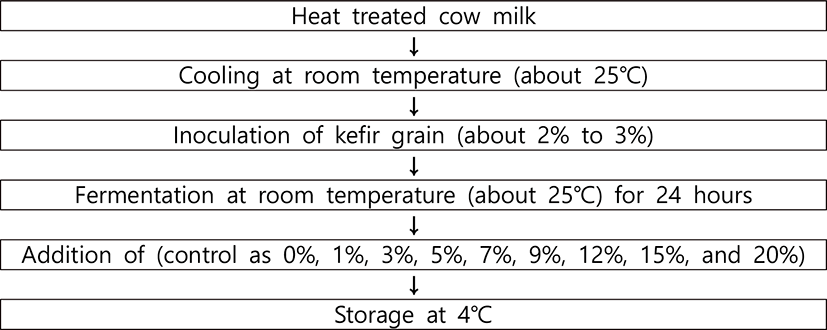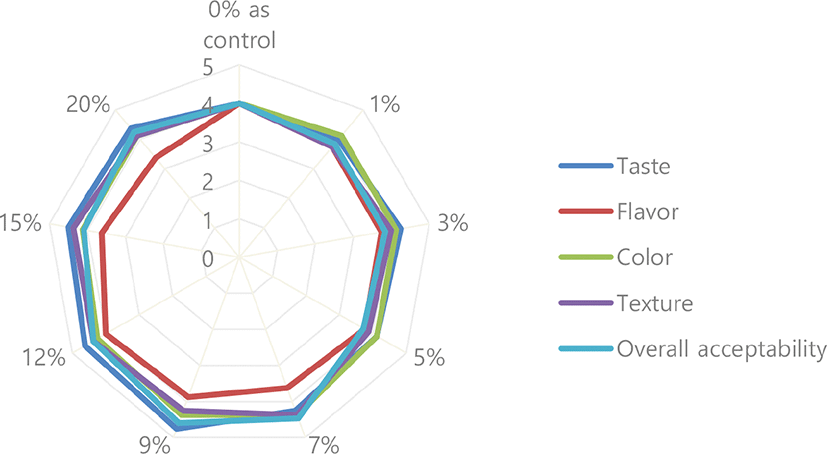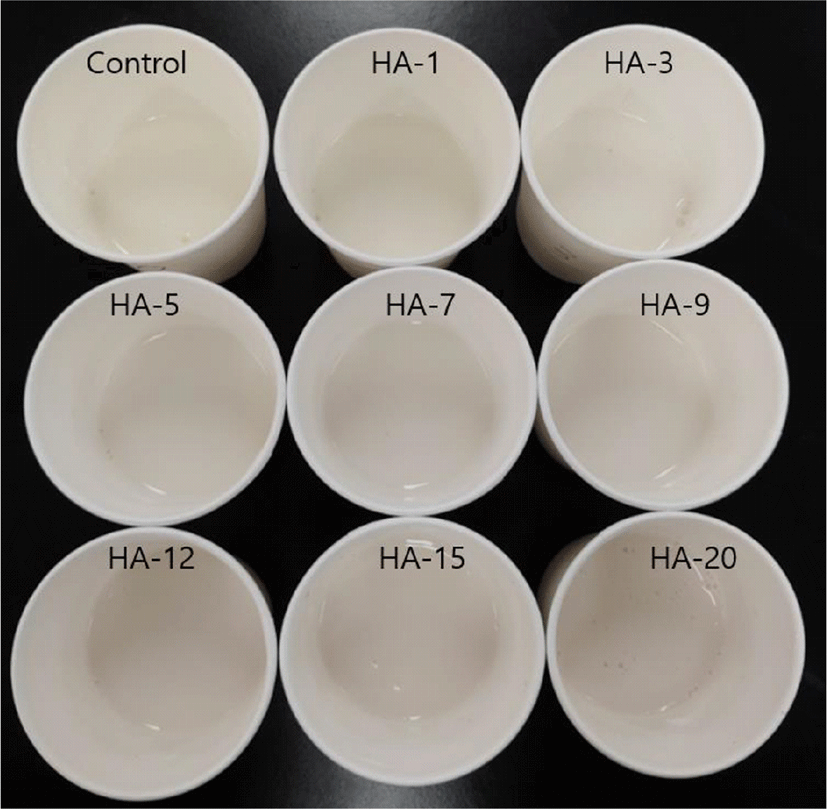Introduction
Hyaluronic acid (HA) is a natural carbohydrate and is a long, unbranched polysaccharide composed of repeating disaccharides of D-glucuronic, and also N-acetyl-Dglucosamine via a β-1,4 linkage with molecular weight reaching up to about 2×107 Da [1,2]. Meyer and Palmer [3] firstly isolated and identified HA (hyaluronan) from the vitreous humor of a cow’s eyes in 1934. Because HA is highly viscous and retains moisture, HA generally could have a role of encouraging proper joint function and tissue repair [4]. Furthermore, HA is recognized as an essential nutrient which effectively strengthens collagen, eyes, immunity, skin, and so on [5]. Hence, many elders should need additional supplement with HA to aid the skin elastin, to alleviate the aging process, to hydrate chapped and (or) damaged skin, and to sustain the production of collagen [5]. So the best way is to provide them with a demand for HA extracted from natural ingredients, or a variety of foods containing HA [5]. However, the HA present in a person’s body gradually decreases, owing to aging and various external stimulant factors (air pollution, smoking, solar ultraviolet radiation, etc.) [6,7]. Namely, the reduction of HA in the body increase joint pain and dry skin [4]. For this reason, recently, the public has started to ingest HA to compensate for its loss in the body [4]. Ingested HA reduces joint pain in the knees of patients with knee osteoarthritis [8,9]. Furthermore, HA dietary supplements are expected to be effective anti-aging supplements [4]. According to various beneficial effects of HA, HA could have a broad range of applications with its outstanding physicochemical characteristics, for example, bio-compatibility, bio-degradability, non-immunogenicity, non-toxicity, and so on [2]. Furthermore, HA may play a leading role in a prominent tool in biomedical applications, for example, drug delivery, ocular surgery, osteoarthritis surgery, plastic surgery, tissue engineering, and so on [2].
Generally, milk and dairy foods are known as excellent sources of calcium which could give assistance to prevent the bone loss, increase the bone formation, promote the bone remodeling, reduce the bone resorption, and so on [10,11]. Among various dairy fermented foods, kefir produced by kefir grains could degrade milk proteins into various peptides with health enhancing effects, for example, various bioactivities having anti-microbial, anti-thrombotic, calcium-absorption stimulation, and so on [11].
Hence, owing to HA has many beneficial advantages, HA could be added directly to kefir because it could enhance physicochemical and the organoleptic features and also improve the human health. Subsequently, the objective of this study is to obtain fundamental data for commercialization by examining organoleptic features by supplementing HA of different concentrations to kefir as dairy food.
Materials and Methods
HA used in this study was food grade and was manufactured in USA. The product of HA used in this experiment was Liquid HA and was purchased from NOW Foods (Bloomingdale, USA).
Kefir were manufactured according to the method of Jeong et al. [12]. Kefir grains was obtained from KU Center for Food Safety, College of Veterinary Medicine, Konkuk University in Seoul, Korea. And kefir grain was used to ferment milk for producing kefir (Fig. 1). Kefir samples were added with different concentration rates of HA (0% as control, 1%, 3%, 5%, 7%, 9%, 12%, 15%, and 20%), and then the kefir samples were stored at 4°C.

The pH of kefir added with HA was measured using Thermo Scientific™ Orion™ Star A211 pH Benchtop Meter (Thermo Fisher Scientific, USA).
Kefir added with HA were manufactured and kept in refrigerator until they were analyzed. All 10 assessors participated in this study, and then evaluated the organoleptic features for each kefir sample. The kefir samples were randomly investigated in 50 mL of disposable paper cup at 10°C in this study. The five categories of organoleptic features was color, flavor, taste, texture and overall acceptability, respectively, and the 5-point hedonic value was ranked 5 (excellent), 4 (good), 3 (fair), 2 (poor), and 1 (extremely poor).
In this study, all data were taken from triplicate analysis in two separate experiments. All data was statistically analyzed using GraphPad Prism 5 (GraphPad Softward, USA). The significant differences were evaluated using Fisher’s least significant difference tests, and if p<0.05, the results are significant.
Results and Discussion
In physicochemical features, the pH of kefir added with HA was about 3.58 (0% as control) to 3.46 (20%) in this study (Table 1). The pH of HA was about 3.47 (data not shown). According to our previous study, the pH of yoghurt added with HA was 4.40 (0% as control) to 4.18 (20%) and the pH of market milk was 6.68 (0% as control) to 6.19 (20%) (data not shown). Because of the pH of HA, it was shown that market milk was affected but the yoghurt and kefir were not affected. In other words, the pH of kefir added with HA added tended to decrease as the addition of HA increased. Namely, except market milk, the pH of yoghurt and kefir did not demonstrate any statistical significant difference between control and treated group tested in this study. As far as we know, no study has been found to have added HA to kefir. So there was no comparison of the pH value of the kefir added with HA.
| Add different concentrations of hyaluronic acid to sample | |||||||||
|---|---|---|---|---|---|---|---|---|---|
| 0% as Control | 1% | 3% | 5% | 7% | 9% | 12% | 15% | 20% | |
| pH of Kefir | 3.58 | 3.53 | 3.50 | 3.50 | 3.50 | 3.50 | 3.48 | 3.47 | 3.46 |
In the organoleptic features of kefir added with HA. Fig. 2 showed the summary of organoleptic features of kefir estimated by 10 assessors. Kefir was added with various concentrations (control as 0%, 1%, 3%, 5%, 7%, 9%, 12%, 15%, and 20%) of HA. In organoleptic features of kefir added with HA, the score of taste was ranged from 4.75 to 4.0, the score of flavor was ranged from 4.0 to 3.38, the score of color was ranged from 4.38 to 4.0, the score of texture was ranged from 4.38 to 3.75, and the score of overall acceptability was ranged from 4.59 to 3,72, respectively. Based on the statistical analysis of the organoleptic features of kefir added with HA, there was a no statistically significant difference in taste, color, texture and overall acceptability between treated group and control group (p>0.05), except flavor (p<0.05). Namely, comparing with the control group, the organoleptic features in the kefir with HA added from 1% to 20% was good (Fig. 2).

Until now there’s never been any research on kefir added with HA, this study as the first study is believed to have very worthwhile and critical importance for verifying the availability of kefir using HA.
Fig. 3 showed the changes of color in kefir added with different concentrations control as 0%, 1%, 3%, 5%, 7%, 9%, 12%, 15%, and 20%) of HA. In this study, kefir added with different concentrations (control as 0%, 1%, 3%, 5%, 7%, 9%, 12%, 15%, and 20%) of HA was changed to weak light brown (Fig. 3). This is probably because hyaluronic aicd’s color is opaque brown. Nevertheless, the overall assessment of color showed good results. According to suggested usage of liquid HA used in this study, take 1 tablespoon (15 mL) 1 to 2 times daily and it could be taken directly or mixed with water or juice. Thus, in this experiment, the addition of HA to the kefir can be assessed to be very appropriately designed.

According to Hamad et al. [5], the HA-fortified yoghurts showed a good appearance, color, odor, taster, texture, and taste with no negative effect on the rheological characteristics. Namely, HA could be safely used as a food addition to support the nutritive value of various food products (for example, fermented dairy foods, etc.) without any adverse effect on the organoleptic and rheological characteristics. The sample added HA demonstrated significantly higher scores compared to the control [5]. Although this study tested with the addition of HA to kefir instead of yoghurt, similar results were shown. Perhaps this result is due to the fact that kefir is also a fermented milk product.
Also, Martinez-Puig et al. [13] reported that the effect of oral supplementation with a natural product containing HA included in a yoghurt matrix was evaluated in terms of functional and quality-of-life parameters. The people who participated in the study were divided into 2 groups (n=20) and ate yoghurt that was either added or not added with HA product daily during 90 days. It could be stated that oral addition with a preparation containing HA improved joint mechanics and muscle function as determined through isokinetic testing thus attenuating risk factors of osteoarthritis [13]. Furthermore, Sola et al. [14] evaluated the effect of low-fat yoghurt added with rooster comb extract rich in HA on muscle function in adults with mild knee pain such as a symptom of early osteoarthritis. Participants (n=40) received low-fat yoghurt (125 mL/day) added with 80 mg/L of rooster comb extract and the placebo group (n=40) consumed the same yoghurt without the rooster comb extract, in a randomized, controlled, double-blind, parallel trial over 12 weeks. Long-term consumption of low-fat yoghurt added with rooster comb extract could be a dietary tool to improve muscle strength in men, associated with possible clinical significance [14]. Kim et al. [15] investigated the clinical efficacy of oral HA in people with dry eye disease. Fifty-four people participated in the study, and they were randomized into two group (treated and control group) [15]. The results of this study was that a combined addition of both oral and topical HA more effectively enhances the corneal epithelial wound healing and its related symptoms than topical HA alone, in dry eye disease [15]. Morifuji [16] reported that the intake of food ingredients with the potential to protect against the risk of damage to skin could be accomplished by taking the HA-rich source foods. The reason for this is that as the amount of HA present in the skin increases, the degradation of the skin matrix by UVA decreases, which in turn increases the elasticity of the skin in animals that have taken collagen hydrolysis [16]. HA is obtained from rooster combs or by microbial fermentation using certain attenuated strains of pathogenic Lancefield group A and C streptococci [17]. But, in rooster comb, HA is complexed with proteoglycans making the isolation of highly pure HA costly [17]. Izawa et al. [18] reported that HA production by Streptococcus thermophilus YIT 2084 in milk was successfully increased 20-fold (about 100 mg/L) with the addition of soybean peptides as a nitrogen source, under fermentation conditions of pH 6.8 and 33°C–40°C. This study shows that lactic acid bacteria used in fermented milk products could produce more HA under appropriate conditions. Further research should be conducted to select more HA-producing lactic acid bacteria, because kefir contains more diverse lactic acid bacteria than yoghurt [18].
As far as it has been known, HA is important in various anatomical structures including the eyes, joints, heart and myriad intricate tissues, and is currently widely used in the therapeutics areas [19]. The synthesis of HA of well-defined and uniform chain lengths is of major interest for the development of safer and more reliable drugs and to gain a better understanding of its structure-activity relationship [19]. However, HA has received less attention from the synthetic carbohydrate community compared with other members of the glycosaminoglycan family [19].
Conclusionally, HA has noticeable effectiveness with important biofuntional and nutritional characteristics, and therefore, HA could be valuable for ameliorating the health human related with skin-damage and muscle [1–5, 13–19]. Research on the development of various dairy products added with HA is urgently needed, so further research should be carried out. Furthermore, further research is necessary to recognize the primary pharmacological of HA and also to demonstrate the optimal concentration of health benefits after ingestion.






